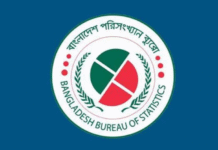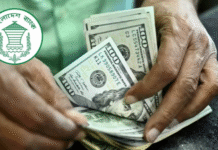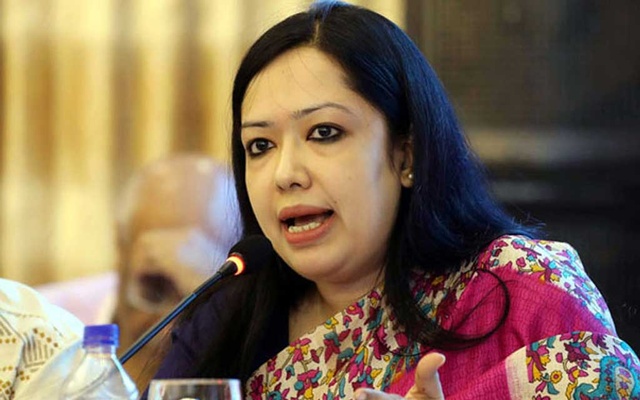
Highlights:
- US tariff cut boosts Bangladesh garment export opportunities significantly
- Buyers shift orders from India, China, Myanmar to Bangladesh
- Factories expand capacity; new investments and reopenings underway
- Chinese investors actively exploring Bangladesh garment sector opportunities
- Closed factories may reopen amid growing global demand
- Rising competition in Europe could pressure Bangladeshi exporters’ prices
What initially seemed like a heavy blow to Bangladesh’s garment exporters has unexpectedly turned into a major opportunity, with many buyers — who would previously source from China and India — are now making initial negotiations for apparel orders.
When US President Donald Trump imposed a 35% reciprocal tariff on Bangladeshi apparel – significantly higher than the proposed rates for India and Pakistan – exporters braced for a severe setback.
However, in a dramatic last-minute revision just hours before the 1 August deadline, Washington reduced Bangladesh’s tariff to 20%, while raising India’s to 25%, with an additional 25% tariff scheduled for India on 27 August over its purchase of Russian oil.
This shift has transformed the landscape.
Buyer queries (initial negotiation for order) are now pouring in from buyers who previously sourced from India, China, and Myanmar. Local garment makers, sensing an opportunity, are dusting off expansion plans, reopening shuttered factories, and considering fresh investments.
The ripple effect is extending beyond domestic firms. Chinese investors, eyeing the changing global sourcing patterns, are actively exploring Bangladesh as a new production hub. What began as a threat has now evolved into one of the country’s most significant trade advantages in years.
“Our factory has seen a surge in orders, mostly from US buyers,” said SM Khaled, managing director of Snowtex Group, a leading export-oriented garment manufacturer with annual exports valued at around $300 million.
“Last year, we exported 3 lakh down jackets to a US buyer. This time, that buyer wants to increase the order to 5 lakh pieces. Another buyer has begun negotiating for 1.5 lakh pieces, up from 60,000 previously,” he said.
Khaled added that they are planning to increase factory capacity in response. “We will need to import new capital machinery. Currently, we operate 30 production lines, but may expand to 45.”
Inamul Haq Khan Bablu, managing director of Ananta Garments Limited, told The Business Standard, “We have orders lined up until December. Recently, representatives of two US buyers visited us for preliminary talks, but we couldn’t take their orders due to lack of available space.”
Bablu, also a senior vice-president of the Bangladesh Garment Manufacturers and Exporters Association (BGMEA), said, “Buyers are actively searching for factories with free capacity. Factories are expanding their capacity. We’ve also started building a new washing plant with an investment of about Tk200 crore.”
He added, “Since tariffs on China, India, and Myanmar are higher than ours, those orders will shift to Bangladesh. Buyers have limited options. Meanwhile, Vietnam and Cambodia face capacity constraints, making it tough for them to expand production.”
Not only the garment sector but also entrepreneurs in the backward linkage industry are planning new investments, leaving behind recent disappointments.
Showkat Aziz Russell, president of the Bangladesh Textile Mills Association (BTMA), said at a Dhaka event on 10 August, “It’s high time for investment.” He urged government support for entrepreneurs and affirmed, “We are ready to invest again.”
Between 2022 and 2023, BTMA entrepreneurs announced $3 billion in new textile sector investments. However, due to the gas crisis and other issues, some investors withdrew. The actual investment figure remains undisclosed.
Capital machinery import data supports this caution: Bangladesh Bank reports that imports of capital machinery declined in both fiscal years 2023–24 and 2024–25, with a 25.41% drop in the latest year compared to the previous.
Russell noted that total investment in the apparel sector is around $75 billion.
Nevertheless, many large garment groups have expanded capacity extensively over the past year, despite some big companies exiting the market.
A BGMEA leader, speaking anonymously, told TBS that Ha-meem Group, New Age Group, Deco, Pacific Group, and Sparrow Group have all increased capacity recently. Entrepreneurs see this as an ideal moment to capitalise on growing demand.
TBS reached out to major US buyers Walmart and Gap Inc, as well as European brand Bershka, to inquire about plans for increasing orders from Bangladesh, but no responses had been received by the time of publication.
Chinese investors eye Bangladesh
Chinese investors are seizing opportunities created by the US tariff changes. They are expressing interest in new investments, renting existing factories, and starting production using current facilities in Bangladesh.
A knitwear factory owner, speaking anonymously, said, “I am already renting one factory to Chinese entrepreneurs. Last week, they showed interest in renting another.”
Industry insiders said Chinese investors are keen on both new investments and acquiring ready-to-use but currently closed factories.
Additionally, Chinese buying houses are exploring Free of Charge (FOC) business models with Bangladeshi garment factories. Under this arrangement, buyers supply raw materials and cover financial costs, while the factory is responsible only for manufacturing. This carries low risk for manufacturers but yields lower profit margins as only cutting and making costs are paid.
Fakir Kamruzzaman Nahid, managing director of Fakir Fashions Limited, told TBS, “Several factories are discussing FOC-based orders, but since we already have sufficient orders, we are not accepting such deals.”
Revival prospects for closed factories
BGMEA reports that 191 factories have closed over the past two years, most of them small. At the same time, around 100 new factories have launched production. The closures include large factories employing up to 15,000 workers.
BGMEA leaders believe the improving market conditions could revive both large and small closed factories.
Inamul Haq Khan Bablu said, “As orders return in full force, opportunities to reopen closed factories will emerge. We are already discussing their revival.”
Jaks Sweater Limited in Gazipur’s Tongi area, which employed 100 people before closing nine months ago, plans to restart. Managing director Mohammad Kamruzzaman said, “I am trying to revive the business by selling my ancestral land.”
Concerns over rising competition in Europe
Despite optimism, some remain cautious. They worry that countries losing US market share will compensate by competing fiercely in Europe, potentially lowering prices and squeezing Bangladeshi exporters.
Rashed Mosharraf, executive director of Zaber and Zubair Fabrics Limited, a leading home textile exporter, told TBS, “As the US market shrinks, exporters from China and India will turn to Europe to sustain business. This could drive prices down, affecting Bangladesh.”
He added that Bangladesh still needs about a year to develop products currently produced by China and India.
Currently, over half of Bangladesh’s exports go to Europe, while less than 20% head to the US.









